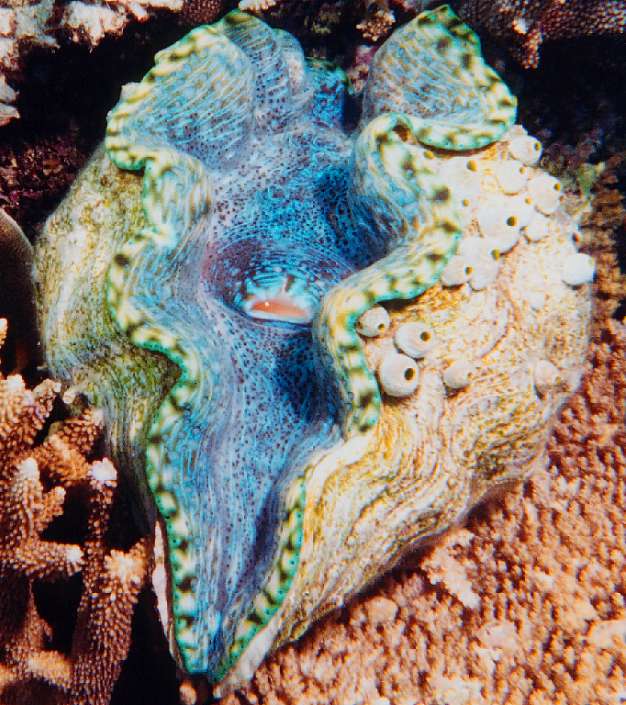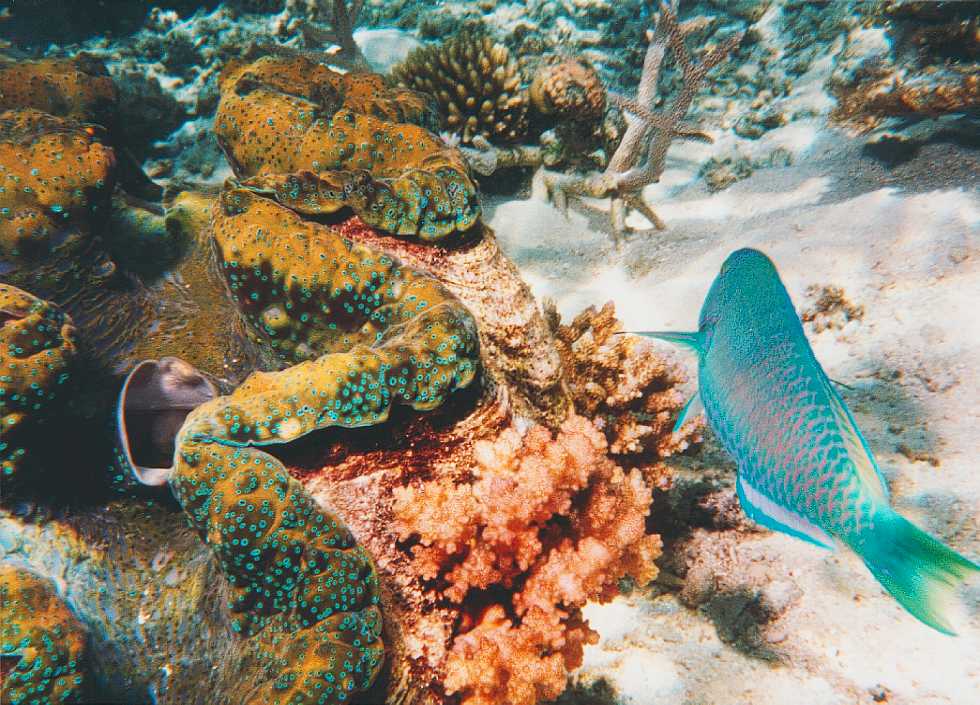Giant Clams of the Great Barrier Reef
 |
This giant clam, Tridacna crocea, is the smallest of the nine species, reaching no more than about 20 centimeters in length. Still, that's an awful lot of clam chowder you can make from one clam! And yes, they are edible; the Chinese even consider the adductor muscle, which opens and closes the shells, to be an aphrodisiac. Tridacna crocea has many common names, including the burrowing clam, boring clam (in the same sense as "burrowing", rather than in the sense of "uninteresting"), crocus clam, crocea clam or saffron-coloured clam. Giant clams have often been overfished, but they grow fast and can be farmed successfully and this species, because of its limited size, is very popular for aquariums. |
|
Giant clams can be found all the way from East Africa to Fiji. The colours of the flesh or "mantle" are extraordinary, but unfortunately it's not possible to distinguish the different species by the colour alone. Instead, you have to look at the size of the clam, the ridges on its external shell and several other features. This one is Tridacna maxima, but it also answers to the name maxima clam or, somewhat counter-intuitively, the small giant clam. |
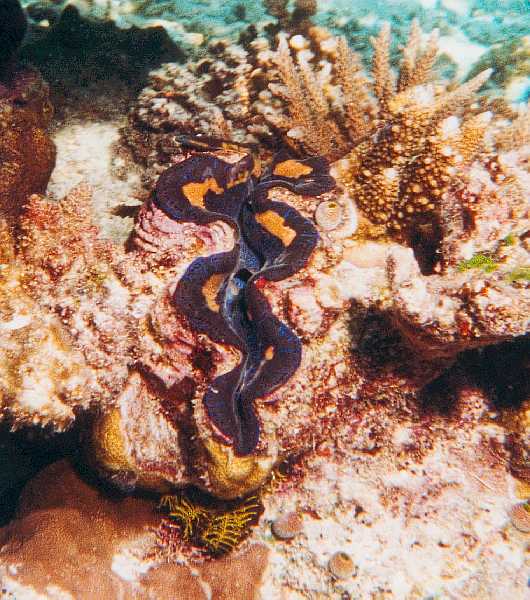 |
|
The algae provide much of the clam's colour, the dark brown parts on this one are actually algae living within the clam. The clam has its own pigmentation, and the algae provide the backdrop. Incidentally, here you can see the clams mantle overhanging the edges of the shell, one indicator that this is Tridacna maxima again. |
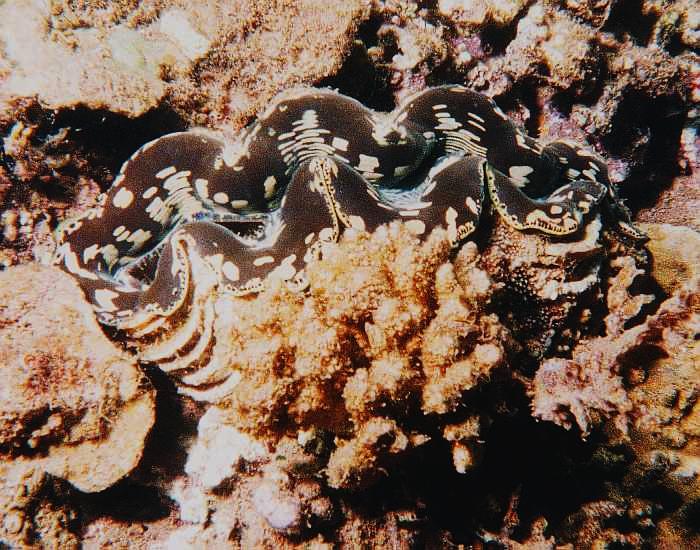 |
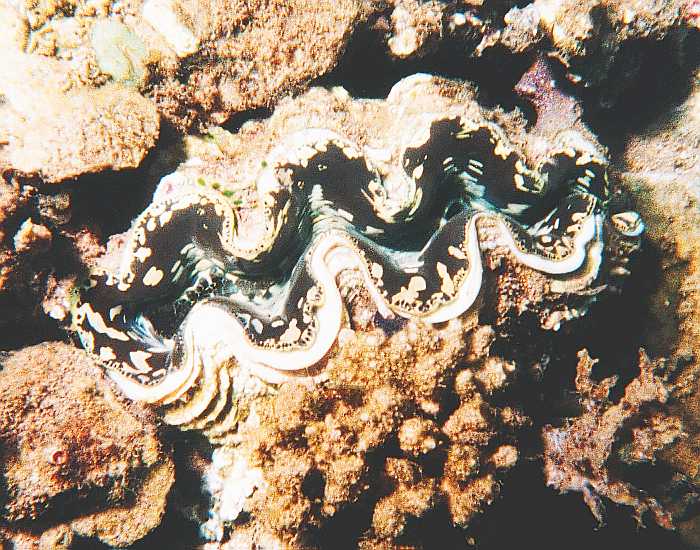 |
Here's the same individual with the mantle slightly withdrawn into the shell. The algae need careful attention from the clam - if there's too much light or too little light then the algae suffer, and the clam suffers along with them. A clam with dying algae bleaches to a white colour, just like corals whose algae is dying. The clams get much of their food from filtering very fine particles from the water through their siphons, but they also get a lot of their nourishment from the algae, so if the algae die then the clam eventually dies, too. |
|
Unlike Tridacna crocea, this specimen is rather short on common names - it's Tridacna gigas, which is simply called the "giant clam". All of the rest of the photos on this page are this same species. |
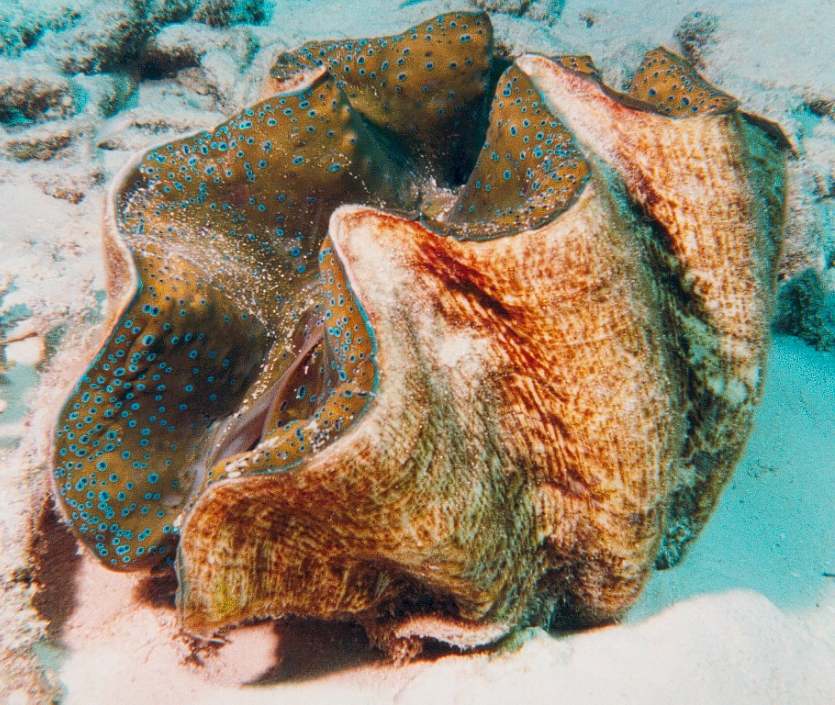
|
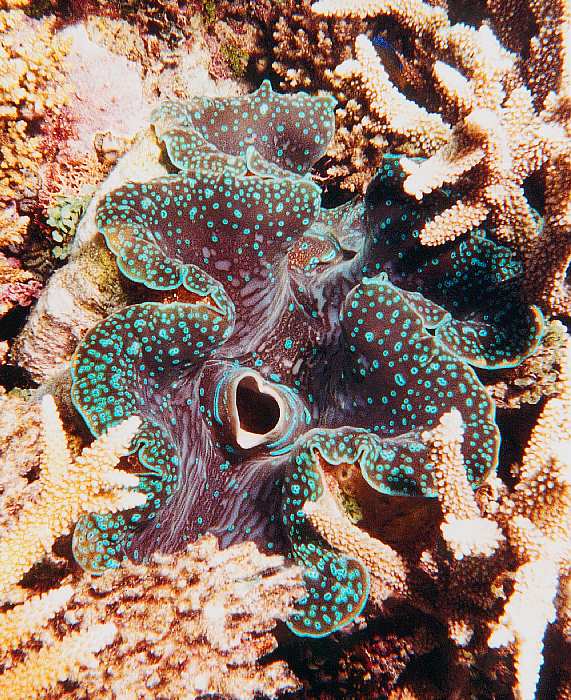 |
The bright coloured circles on the flesh are iridophores, which have lenses that direct light into the mantle. The clam senses the light and can decide whether there's a potential predator nearby, in which case it closes its shell. If the clam is not sensing enough light then it takes steps to increase the amount of light reaching its algae so that they stay healthy. It does this by extending its mantle further out of its shell and by diminishing the amount of coloured pigmentation in its mantle to allow more light to get through to the algae. |
|
In this photo you can clearly see the inlet siphon at the front of the photo, and the outlet siphon at the rear. Inside the clam is a water chamber with gills and a stomach. The gills absorb oxygen from the water and also filter out food particles and pass them to the mouth and stomach. |
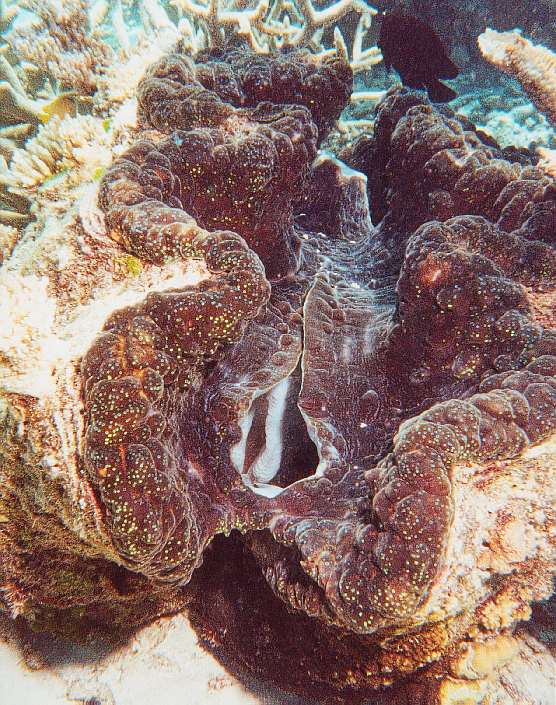 |
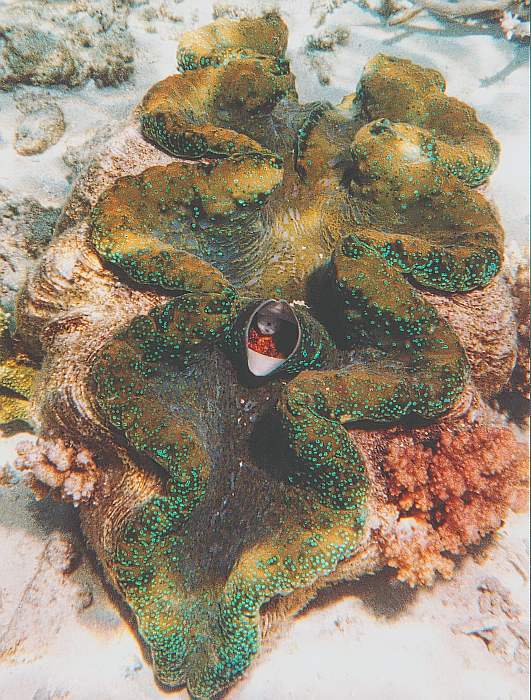 |
Before the clam can close its shell, it has to empty this water chamber, which takes several seconds. This is why the stories of divers being drowned when their feet get stuck in a giant clam are mostly nonsense. Here you can see straight into the outlet siphon, though I'm not sure what the reddish tissue inside is, perhaps it's the gills. |
